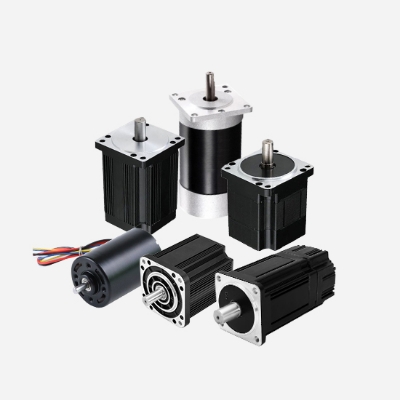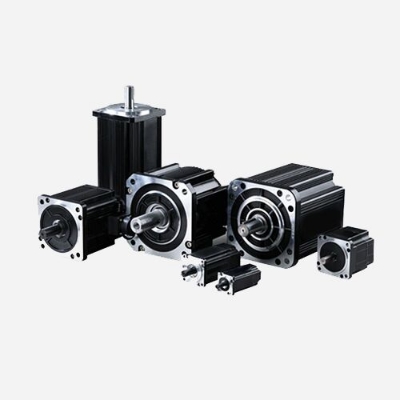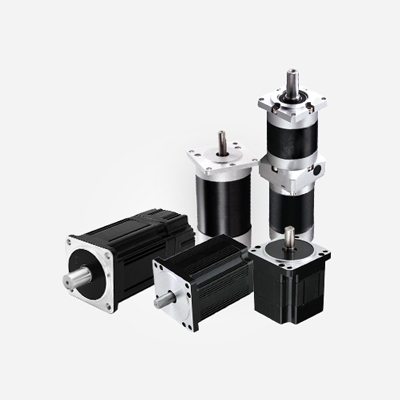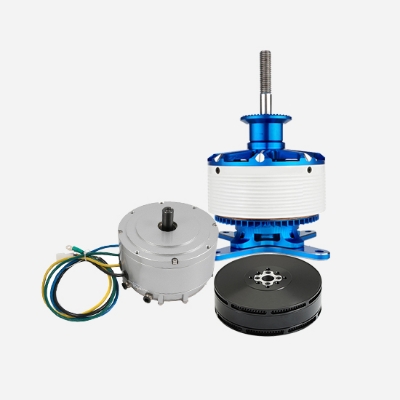DC motor refers to the motor with a brush, and DC brushless motor is the same kind as an AC servo, the same belongs to a synchronous motor, the name DC, actually does not belong to the DC category. In the same way, the DC servo corresponds to the DC servo motor. A Brushless servo corresponds to DC brushless servo motor, while an AC servo corresponds to an AC servo motor. Brushless servo and AC servo are one category, and DC servo is another.
A Brushless servo motor is small in size, light in weight, high in force, fast response, high speed, small inertia, smooth rotation, and stable torque. The control is complex and easy to realize intelligence, and its electronic phase change is flexible and can be sine wave phase change.
The motor itself of the DC brushless motor is the electromechanical energy conversion part, it has sensors in addition to the two parts of the motor armature and permanent magnet excitation. The motor itself is the core of the DC brushless motor, which is not only related to the performance index, noise vibration, reliability, and service life but also involves the manufacturing cost and product cost.
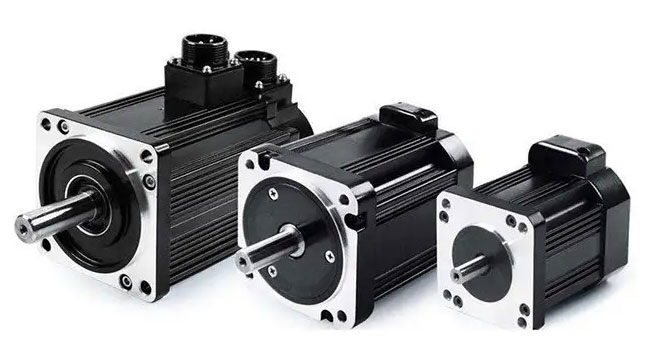
Due to the adoption of a permanent magnet magnetic field, the DC brushless motor is free from the traditional design and structure of a general DC motor to meet the requirements of various application markets and to develop toward the direction of saving copper and material and easy manufacturing. The development of a permanent magnet magnetic field is closely related to the application of permanent magnet materials. The application of third-generation permanent magnet materials drives the brushless DC motor in the direction of high efficiency, miniaturization, and energy saving.
Different definition
Brushless DC motor consists of a motor body and driver, which is a typical mechatronic product. A Brushless motor is a motor without a brush and commutator (or collector ring), also called a commutator motor. Back in the nineteenth century when the motor was born, the practical motor produced was the brushless form, i.e. AC squirrel-cage asynchronous motor, and this motor was widely used. However, the asynchronous motor had many insurmountable defects, so that the motor technology developed slowly. In the middle of the last century, transistors were born, so the DC brushless motor with transistor commutation circuit instead of brushes and commutator was born. This new brushless motor is called an electronically commutated DC motor, which overcomes the defects of the first-generation brushless motor.
The Servo motor includes a stator, rotor core, motor shaft, servo motor winding commutator, servo motor winding, speed motor winding, and speed motor commutator, the said rotor core is composed of silicon steel punching laminated fixed on the motor shaft.
Essentially different
Brushless DC motors usually use tile magnets for the rotor poles, and the magnetic circuit is designed to obtain a trapezoidal wave of air gap magnetic density. Brushless DC motor control requires position information feedback, and must have position sensors or use position sensorless estimation technology to form a self-controlled speed control system. The current of each phase is also controlled as a square wave as much as possible, and the inverter output voltage is controlled according to the method of PWM for brushless DC motors. In essence, the brushless DC motor is also a kind of permanent magnet synchronous motor, speed regulation actually belongs to the category of variable voltage variable frequency speed regulation.
Usually, AC permanent magnet synchronous servo motor has a stator three-phase distribution winding and permanent magnet rotor, the magnetic circuit structure, and winding distribution ensure that the waveform of induction potential is sinusoidal, and the applied stator voltage and current should also be sinusoidal, which is generally provided by AC variable voltage inverter. Permanent magnet synchronous motor control systems are often self-contained and also require position feedback information, and can use advanced control methods such as vector control (magnetic field directional control) or direct torque control.
Different design concepts due to square wave and sine wave control
The so-called "DC frequency conversion" of brushless DC motors is essentially AC frequency conversion through an inverter, and in terms of motor theory, brushless DC motors are similar to AC permanent magnet synchronous servo motors and should be classified as AC permanent magnet synchronous servo motors; however, they are customarily classified as DC motors because from the perspective of their control and drive power supplies and control objects, they are called "brushless DC motors". However, it is customarily classified as a DC motor, because from the perspective of its control and drive power and control object, it is appropriate to call it a "brushless DC motor".

